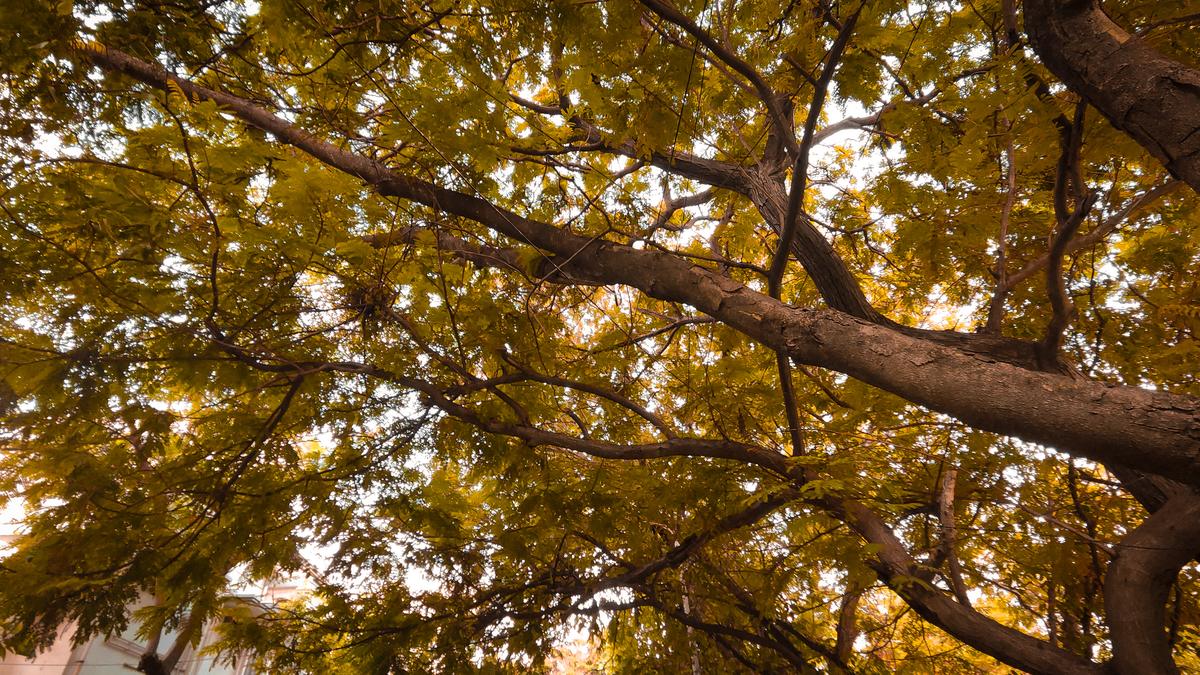
The great siris of India’s cities
The Hindu
These majestic siris or vaagai bursts into bloom in summer, support hundreds of birds and insects, and inspire a myriad stories
I live near a siris (Albizia lebbeck). It stands shoulder-to-shoulder with a copper pod, flanked by two smooth-skinned gulmohurs. The siris, however, is not gregarious even with its own kind. It bends away from them, draping its rounded, umbrella-shaped shade gently over our yard. Trees do not like their canopies to touch.
Every year, I know summer is coming from the sudden abundance of tiny, wandering red ants and colourful picturewings framed against the sky. They arrive in time for the siris blooming in a burst of fluffy white pom-poms, which slowly turn a pale yellow, emanating a mellow fragrance that lingers on at night. Ants, flies and stingless bees swarm; butterflies like the restless Green-tailed Jay and the slower, iridescent Great Egg Fly pause to settle on the flowers.
The picturewings hover over the trees in small groups on stained glass wings, filtering black and yellow light from the blue sky. They look aimless and slow but are actively hunting the flower feeders. In turn, the picturewings and bees are picked off mid-air by agile Blue-tailed Bee-eaters. Other birds also join the melee on the siris — flamebacks, white-throated kingfishers, drongos and tailorbirds all making use of this feast.
The siris is an Indian native and was once fairly widespread. Kalidasa personified Parvati with its delicate flowers in his Kumarasambhava. In Tamil, it is the vaagai, legendary in Sangam literature for its connotation to victory. Legends speak of Durga gathering her strength under a vaagai, before proceeding on her war with Mahisha. For this reason, garlands of its flowers were apparently worn by warriors.
Almost every part of the tree is considered useful as per Ayurvedic texts. Later, many trees with mimosa-like leaves came to be called vaagai or variations of it. In Kerala, the Madagascar-born gulmohar is often referred to as a vaaka.
How many of us can recognise or name a vaagai now? How many from Kerala would know the picturewings by their Malayali name, Onathumbi — literally the dragonfly of Onam. They would typically emerge during the harvest season, during August-September, to feast on the burgeoning insect population. Built over wetlands and paddies have made them uncommon in cities, so much so that most of us have forgotten their names. The siris, too, is not as conspicuous now, ignored in places as an avenue tree due to its deciduous and reclusive nature.
Naming something has an unseen power. Especially in nature, which many of us deem indistinguishably homogenous. Names, especially those in the local tongue, lead to stories, and stories tap into our collective memories. Learning the name of a tree or a bird or an insect often means learning something about it: its uses, its ties with local culture and geography, or its connections to other forms of life. Naming a living being is also an awareness of its position in a seasonal cycle or its place in time.

Gaganyaan-G1, the first of three un-crewed test missions that will lead up to India’s maiden human spaceflight, is designed to mimic - end to end - the actual flight and validate critical technologies and capabilities including the Human-rated Launch Vehicle Mark-3 (HLVM3), S. Unnikrishnan Nair, Director, Vikram Sarabhai Space Centre (VSSC), has said










